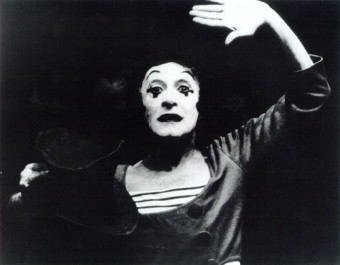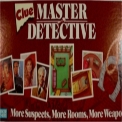Saturday, August 29: Mississippi Mud
DIAL S FOR SUSPENSE
by John M. Floyd
Often I’ll read a novel or story or see a movie and be reminded of some technique (a.k.a. trick) that the author or director used to make the story better. Sometimes I suspect it wasn’t even a conscious effort — with many of the masters this kind of thing seems to be second nature, and just happens as a result of their telling the tale.
Tight Quarters

One of these techniques is having the story happen within a confined space. That is of course not possible, or even advisable, in all pieces of fiction — it might even make a story boring rather than interesting. But when it does work, it works really well. The movie that reminded me of this was Hitchcock’s “Dial M for Murder,” which I watched again last week. Almost the entire film takes place inside the apartment of the main character (the villain) and his wife. Hitch used this same method in at least two other movies: “Lifeboat” and “Rope.”
Why is this kind of thing effective? I think it’s because it keeps the storyline focused, and therefore keeps the reader focused as well. There’s not a lot of straying off into other locations or subplots, or the lives of minor characters. This is what’s happening, it seems to say, and it’s happening right HERE. Such an approach, when possible at all, requires tight plotting by the author. After all, plot isn’t usually a result of setting; setting is a result of plot.
Short vs. Long
This “confined to one spot” idea is more applicable to short stories than novels. Novels can wander all over the place, in subject and setting, and still keep us turning the pages (up to a point, at least). In short stories, there’s less chance or room to explore beyond the main plotline, so there are a lot of single-setting shorts. Several examples that come quickly to mind are Roald Dahl’s “Lamb to the Slaughter” (the policeman’s home), Bill Pronzini’s “Words Do Not a Book Make” (a phony sales office), and Shirley Jackson’s “The Lottery” (the town common).
Again, the story itself determines whether you can have everything happen within the confines of a single location — but with a little thought, it can sometimes be done. In “Dial M for Murder” the victim doesn’t go to the police, the police officer comes to her. The villain hires a killer by inviting him to the apartment, and the attempted murder takes place in the apartment as well. We find out the wife has been wrongly convicted and is awaiting execution not by our seeing her in the courtroom or in jail but by our hearing the husband and the police inspector and the wife’s lover talking it over, right there in the living room.
Work vs. Play

Another thing occurred to me while watching that movie — it seemed more like a play than a film. Turns out it was a play. Hitchcock was able to transform it into a suspenseful movie in a single setting because of his near-perfect camera work and camera angles. Plus, the timing and the reactions of the players to the dialogue were outstanding. I sometimes think certain short stories, too, would be better if they were done more like plays, with the dialogue doing most of the work.
I’m not saying that several different settings aren’t important, and that they can’t add a great deal to a story. But when different locations aren’t essential to the storyline (think Misery, or “Sleuth,” or Death of a Salesman), concentrating on a single place can be effective and — once again — can serve not only to keep the reader/viewer’s attention but to maintain suspense throughout the story.
On the Home Front
I try to do that, whenever I can, in my own short stories. Some, especially the longer ones, have a lot of scenes in different places. But many of them do use only one setting, including my six most recent stories in AHMM and Strand Magazine: Those take place entirely within (1) a deceased victim’s apartment, (2) a campaign office, (3) the headquarters of an engineering firm, (4) a Houston oilman’s office, (5) the home of a research chemist, and (6) a downtown park. Another point: I think single-setting shorts are not only easier to read, they’re easier to write. The reader isn’t the only one who needs to stay focused.
I’d be interested in hearing your thoughts about this. Do you think having the action confined to one location (when possible) is a plus or a minus? Does it improve the “flow” of the plot? Can it simplify things too much, maybe to the point of boredom? Would you rather see the characters move from place to place?
Maybe it honestly doesn’t matter, one way or the other. Dial D for Diversity . . .




















Good column. Oddly enough I was just rereading James Powell’s short story “Maze In An Elevator,” which takes place – oh, you guessed.
Hadn’t thought about this until reading your column. Now I can’t remember if I’ve ever written a story in one location. Guess the answer to whether or not to is “it depends.”
Something I didn’t mention: I seldom start out with the intention of setting a story in a single location. It just sometimes happens that way. As Dick said, it depends on the story. One of my AH mysteries takes place entirely in the Narita Airport in Tokyo, of all places — and another inside a getaway car.
The best example of this kind of thing sounds like “Maze in an Elevator,” Rob — I haven’t read it, but it’s now on my to-do list.
This made me think of a newer movie “Phonebooth”.
My only concern with one-setting stories would be making sure they don’t come across… well, stagy. If you write it so all the action happens in one place, terrific. On the other hand, if you summarize key events in dialogue instead of showing them happen, for no reason except to avoid changing the scene, you risk losing the sense of immediacy that you’re trying to maintain. But maybe that’s what you meant by the “when possible” addendum.
I don’t think I’ve ever deliberately planned to write a story with one setting, but I looked back at my most recent shorts out of curiosity. Nearly a third of them could fit on a stage without a set change. Another few could easily be rewritten to do so. I guess that means I consider confining a story to one location (when possible) a plus.
Coincidentally, I just read “Lamb to the Slaughter” again yesterday. Also “Taste,” which takes place in one evening at a dinner party. Roald Dahl was awesome.
Fred, I think you’re exactly right: if this approach is to work, most of the action has to take place right there. Having the key events happen “off-screen” and hearing about it secondhand would probably be boring and ineffective.
As for “Phonebooth,” alisa, I think you might have identified one of the smallest possible single-settings. (Another good single-location movie was “Wait Until Dark,” back in the late sixties. PLENTY of action, and suspense too, happened in that little apartment.)
One of my favorites Hitchcock’s Rear Window comes to mind, based on Cornell Woolrich’s 1942 short story “It Had to Be Murder”.
Hmmmm….one location or several. I can think of a dozen examples of both, all good. My guess is it depends on the story!